After I harvested all my calamansi limes, it was time to repot the tree. You can see from these photos that it didn’t go well.
I figured I was liberating my tree from the nursery soil that it was planted in—a soil that all the guides say is too dense and peaty for citrus. The meager rootball only occupied the top third of the two gallon pot. Its roots were thin and scraggly.
So I cleaned the roots, pruned a couple over-long and dead ones, and secured the tree in a large terra cotta pot full of free draining bonsai soil. Citrus trees love drainage, the guides affirm. I told myself that mine should be popping with new growth in no time.
There was no new growth. Over the following weeks the calamansi dropped all of its leaves, and recently the younger branches have developed a jaundiced color. But everywhere I scrape away the bark, I see green cambium. The tree is still technically alive.
Time for an investigation.
The roots look about the same as when I repotted the tree two months ago. No new growth, but not that many dead strands either. The tree is barely clinging to life.
I think I used too large a pot and got the fluid dynamics all wrong. This batch of bonsai soil has smaller granules that retain more moisture than previous mixes I’ve purchased. In theory it should still be a better choice than the brick-like mix the tree was planted in before, but in this case, all the free soil in the pot must have held onto water like a sponge. Just when you think you know a thing or two about a thing or two, bonsai is ready to remind you of your ignorance.
Now the tree is in a much smaller pot, which will hold less water and hopefully give the roots a fighting chance to survive and grow. I’d hate to lose my only citrus tree, but I’m hopeful. I’ve seen others come back from the brink like this.
Bonsai training is stressful for any tree. The more I practice, the more I see the value in learning how much stress is too much for a particular specimen. Some species are more resilient than others. The same is true for individual trees—even rooted cuttings of the same tree. I’m only beginning to learn how and why.
If my calamansi survives, I’ll know how far it can be pushed. If it doesn’t, I’ll learn something too. Either way this lesson will inform my future citrus bonsai projects. I’ve killed three pomegranates in this manner. Countless figs, too, plus five cotoneasters, three camellias, two cypresses, a beech, and a larch. The path to successful bonsai is mulched with dead trees.
I go easier on some trees than others. This ponderosa pine hasn’t seen any work since I wired it two years ago. I bought it from a fellow named Andy Hatch, who collects naturally dwarfed trees from the mountains of Deadwood, South Dakota. He estimates this specimen is about 50 years old; young for a mountain pine, yet decades older than anything else in my collection. It’s a survivor. It merits respect and a light touch.
After two years of recovery from shipping shock and periods of poor sunlight, the tree finally looked healthy and vigorous enough for the next step in its bonsai training. Look at all those buds!
Pine trees have a narrow window in spring when it’s safe to transfer them to new pots. Nothing is more stressful to a tree than having its roots disturbed; when buds fatten up like this, it’s a sign that sap is actively flowing and the roots are ready for new growth. I kept the stress light and slipped the tangled rootball into a larger pot with fresh bonsai soil. Other than a couple clips, I left the roots completely intact. I want them to grow strong and fill out this larger pot before I do any more work on the branches. Two years of foliage stasis have shown me that this tree doesn’t respond well to change. It needs me to be patient.
It’s hard to see behind the other plants in this restaurant planter, but I repotted the tree on a sloping angle so it’s less upright and more dramatic. The trunk climbs up and twists back on itself like a cresting bullwhip. So far, its growth hasn’t skipped a beat.
Now it’s time for observation. This is part of the stress test, too. How long will it take the roots to fill the pot? How plump and verdant will the new needles look? The answers to these questions will clue me into the tree’s overall health and character. How it responds will show me what it can take in the future.
If all goes well, I should have a halfway decent looking ponderosa pine bonsai by 2028. Stress is key to getting there. It prepares us for the long haul.
Tree reading
Cast your vote to decide an official wildflower for New York City! [Wildflower NYC]
A passionate case against calling palms “trees.” [Jews Love Trees]

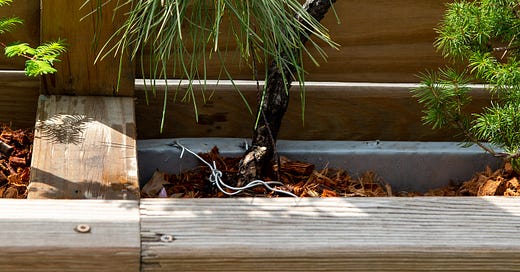

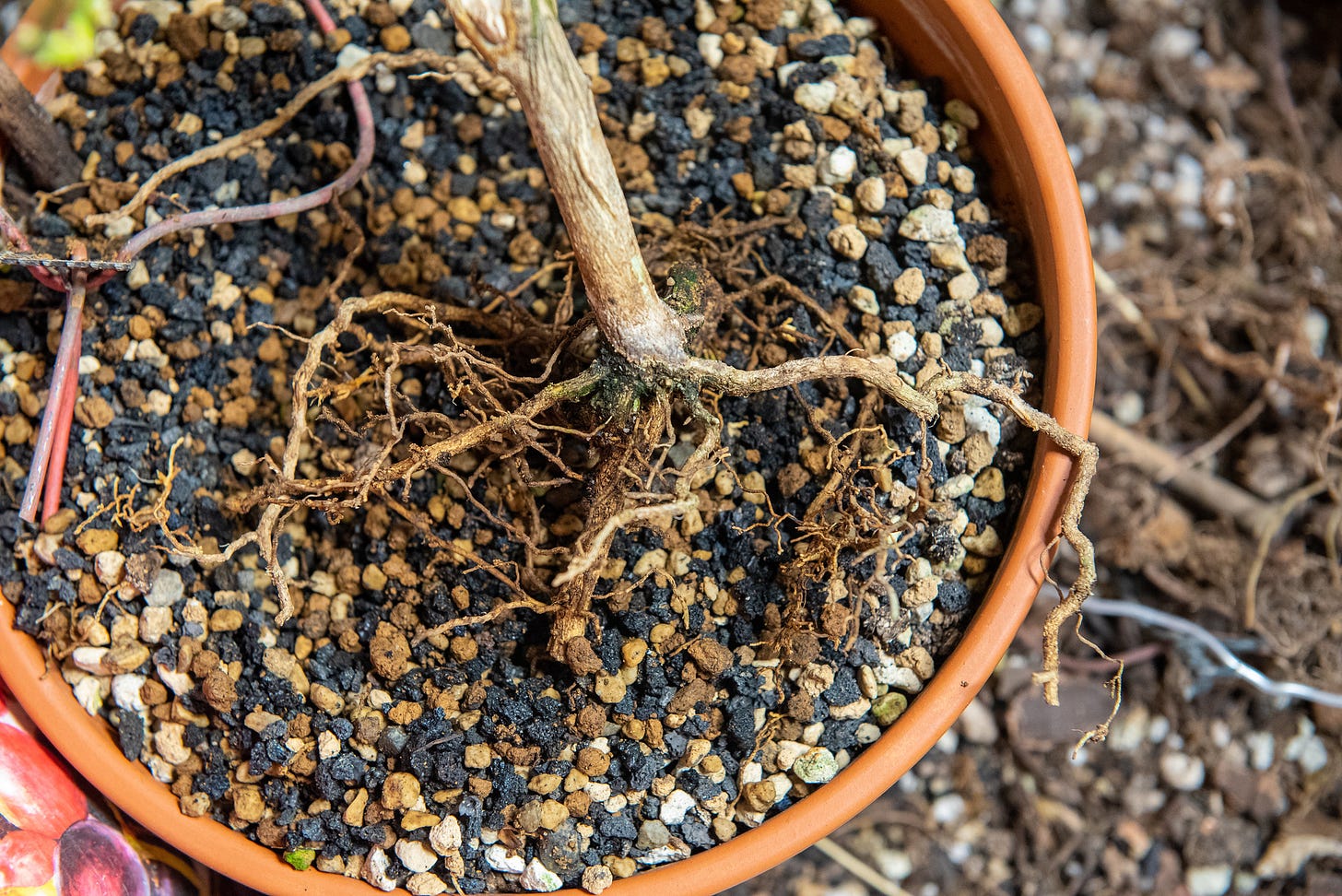
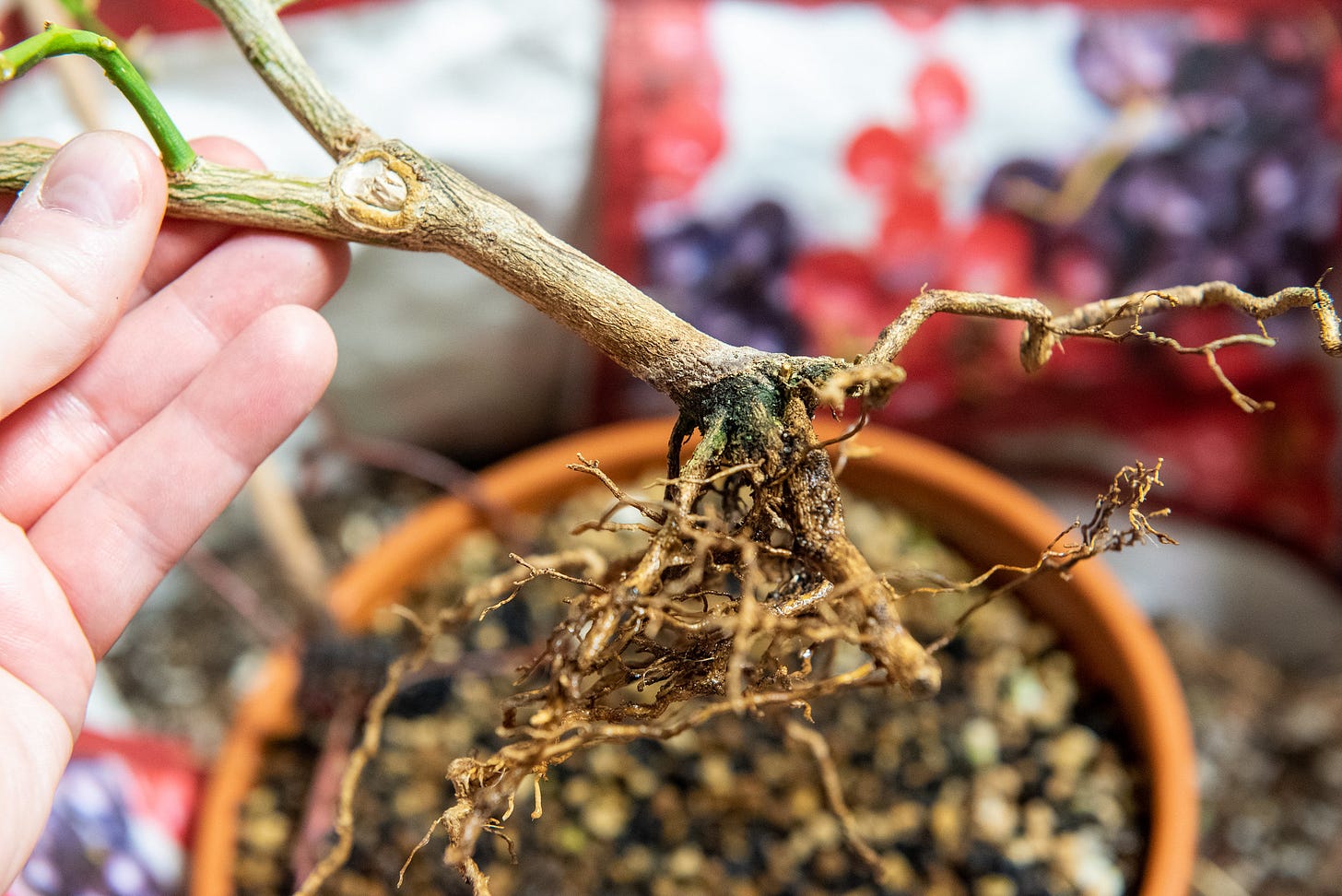
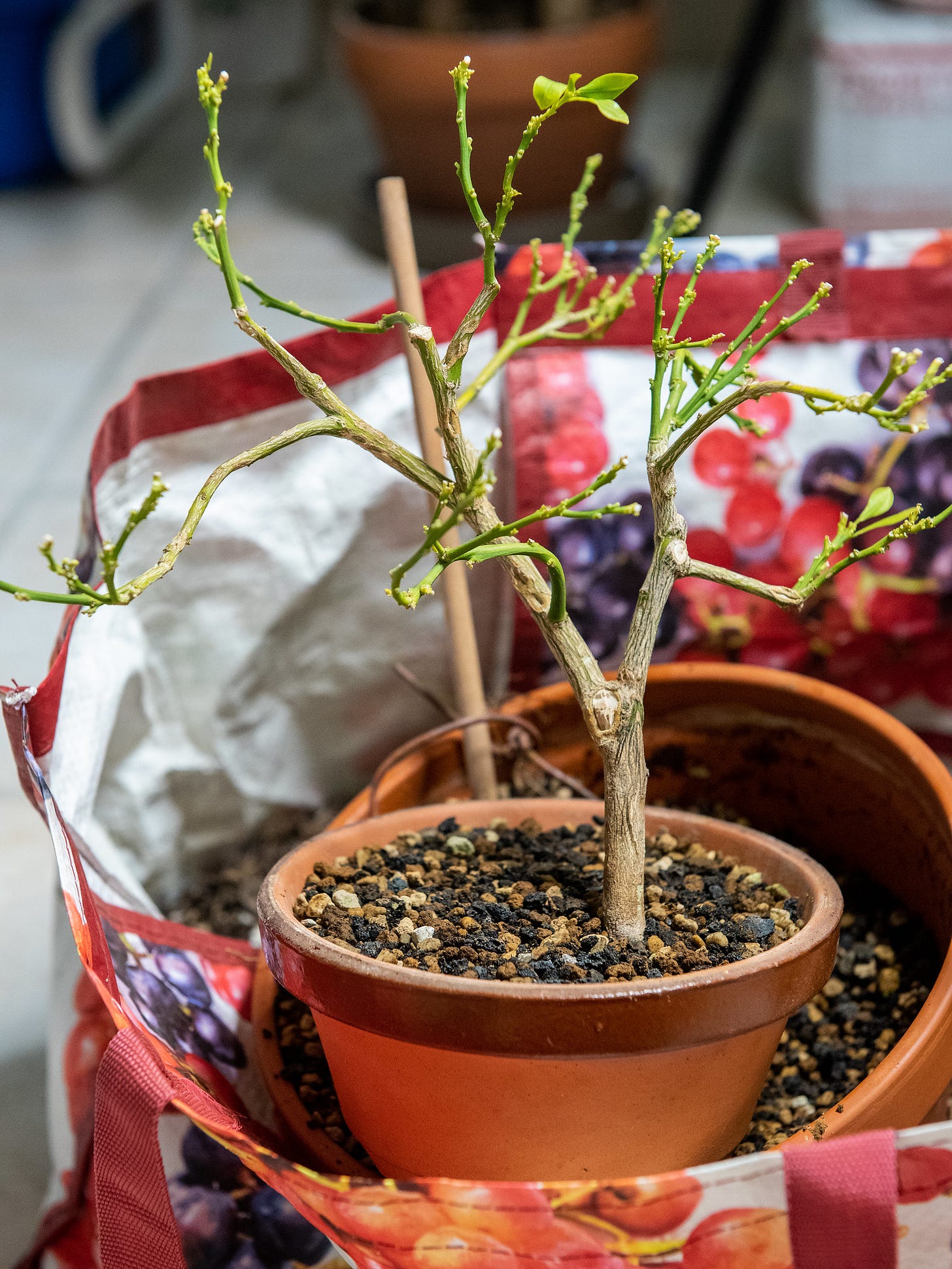

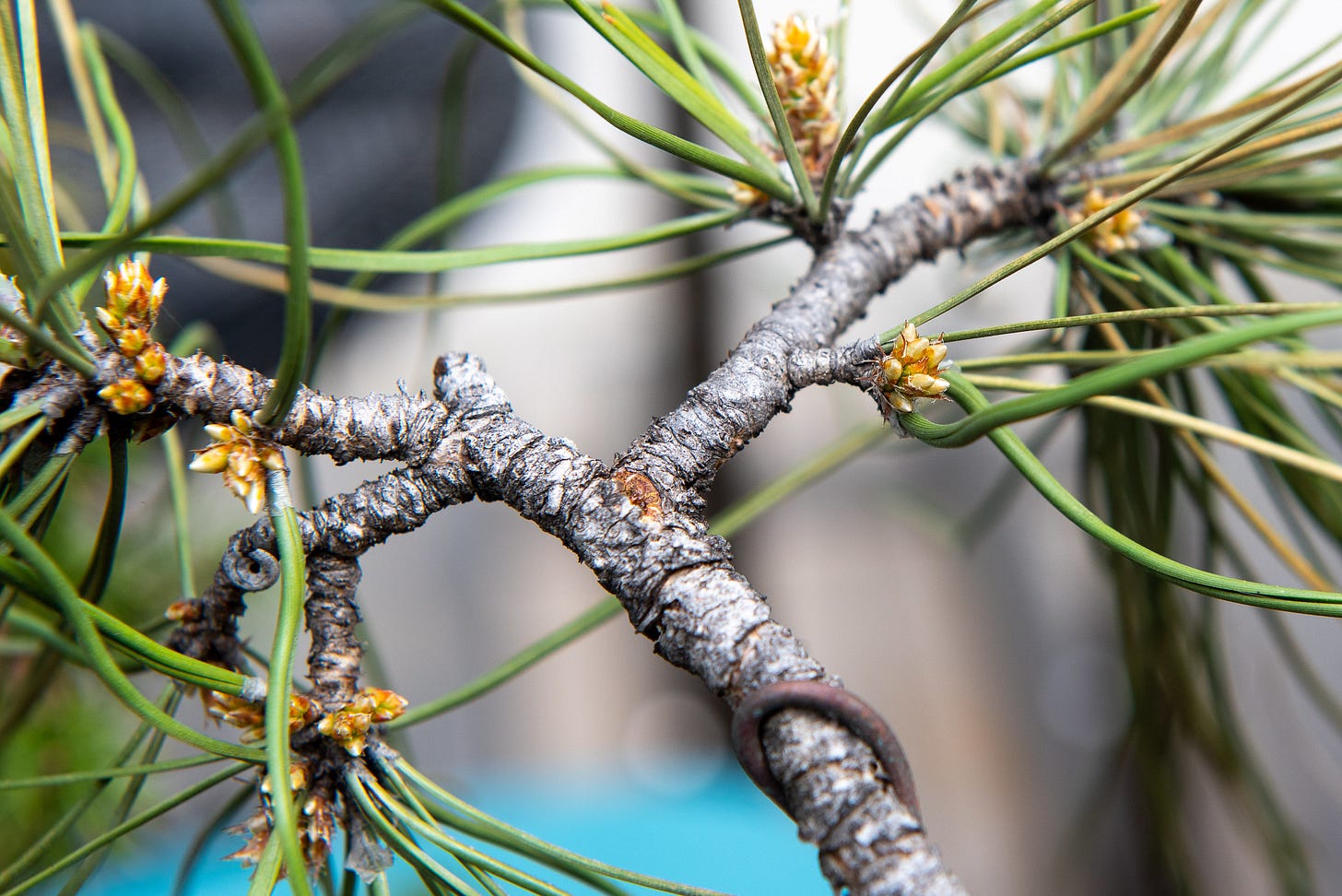
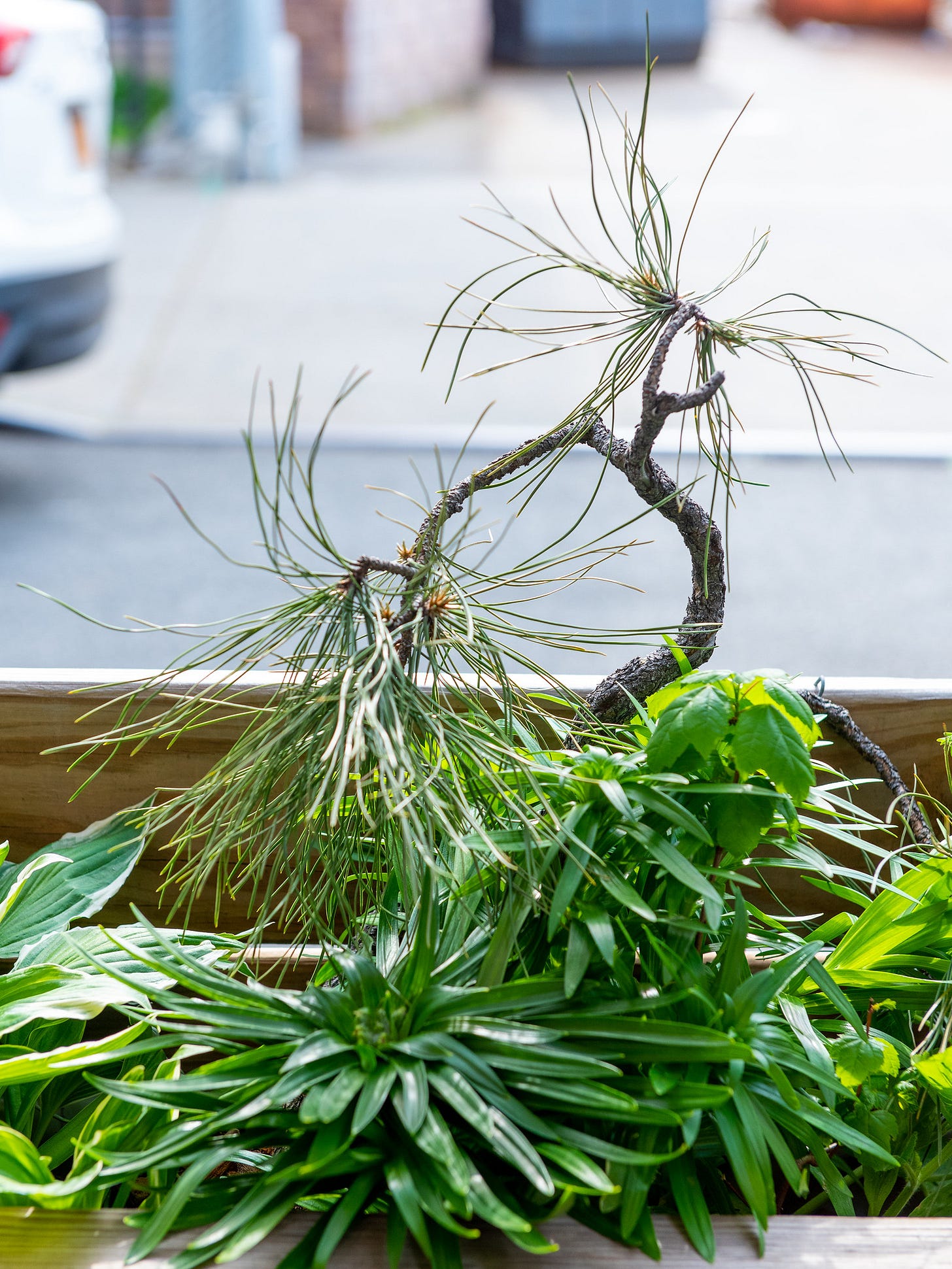
Great read, I only can relate to all those dead trees. So many variables in tree-stress management! Now that you mentioned larger training pots for small trees I reckon I should change one or two. Do you have any rationale on why this can be a bad thing?is it just the amount of water it holds? Thanks!
I love reading this. I really, really, really do not know much about plants. My calamansis' (Yes, there are many) growth is stunted. I know I need to repot them as I have a bunch (around 4-5) together in 1 pot. BUT very afraid to kill them. ESPECIALLY that I grew them all from seed. Eep.